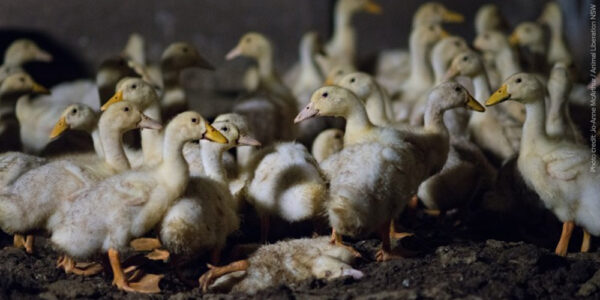Video Transcript
From a handful of cases in Wuhan, China to a global crisis in just a few months. Thanks to COVID-19, nations around the world cancelled large events, implemented strict lockdowns, and closed their borders.
These measures have struggled to contain the virus and millions have been infected. Many experts have warned that this reactionary approach to treating pandemics is ineffective. As any doctor will tell you — prevention in better than cure.
So we need to ask ourselves what conditions allow diseases like this to emerge? And how we can we prevent another pandemic arising in the future?
COVID-19 is a zoonotic disease. Meaning a disease that originated in animals and then made the leap to humans. If we examine the history of infectious diseases, this origin isn’t surprising.[1]
It is believed that the domestication of the camel led to the virus responsible for the common cold. The domestication of chickens gave humans various strains of the flu. while tuberculosis and measles likely emerged from cattle. More recent pandemics, like SARS in 2002, H5N1 in 2003 and MERS in 2012, can all be traced back to animals. Now COVID-19 is believed to have originated in the wildlife trade.[2]
So why are animals so often the source of infectious disease?
Well, in epidemiology, the study of infectious disease, animals are what is known as natural reservoirs. This means that infectious pathogens naturally live and replicate inside them, often without causing any symptoms. Both wild and domesticated species can be natural reservoirs.[3]
When we come into contact with infected animals, we give the pathogens a perfect opportunity to make the leap to humans. And, put simply, since our human immune system has never been introduced to these pathogens, it doesn’t know how to deal with them, so we get sick.
The way we farm, slaughter and hunt other species brings humans into close proximity with these potential reservoirs of infectious disease.
On factory farms for example, animals are crammed indoors by their thousands, they are in constant stress, often living in filthy conditions and consuming unnatural diets.
This is where most of the world’s chicken and pig meat comes from and these conditions are a hotbed of disease.
Despite strict biosecurity measures, outbreaks still occur. In fact in 2013, an egg farm in Young NSW, reported an outbreak of a highly infectious bird flu strain. Over 400,000 layer hens were infected.[4][5]
Even during the COVID-19 pandemic, with a virus already infecting millions across the globe, scientists are warning that a new strain of highly infectious H1N1, or swine flu, has infected workers on Chinese pig farms and has “all the essential hallmarks of a candidate pandemic virus”.[6]
During the COVID-19 crisis, slaughterhouses, and meat processing facilities have seen a disproportionate number of infections.
In Australia, a Victorian slaughterhouse was linked to over 100 cases of the virus.[7] In the United States multiple meat packing plants we forced to close due to outbreaks[8], and in Germany, a slaughterhouse saw more than 1,300 of it’s workers infected with COVID-19.[9]
Staff in these facilities work in close proximity for long hours, which makes social distancing difficult. The air conditioned, humid environment they work in, designed to keep meat from spoiling, also helps infected droplets spread, settle and stay viable.[10][11] It’s no wonder that these workers are at high risk of contracting the disease.
And It’s not just affecting people, it’s important to remember that the animals themselves are also victims of these pandemics. Outbreaks of influenza viruses have led to mass chicken and pig culls, where hundreds of thousands of animals have lost their lives.[12][13] In the UK during the 1990 outbreak of BSE or mad cow disease, thousands of cows were killed indiscriminately to prevent the spread of the disease.
During COVID-19, slaughterhouse and processing plant closures in the US have created a backlog of animals with nowhere to go, and so, to cut their losses, the meat industry culls them.[14]
There is also strong evidence to suggest that the way we interact with the natural world is contributing to the rise of infectious disease. The expansion of agriculture and other human activities is causing widespread deforestation around the globe and as natural habitat is destroyed, wild animals are being forced into closer and closer proximity with humans.
This leads to more encounters between wildlife, humans and farmed animals, increasing the risk of pathogens crossing over the species barrier. A 2019 study by USAID and EcoHealth found that of all wildlife born diseases 31% have been related to some form of land use change. This includes HIV, Ebola and Zika virus.[15] In deforestation hotspots like the Amazon and Malaysia, there is a direct link between land clearing and outbreaks of Malaria.[16][17]
So while the exact source of COVID-19 is still to be determined, it’s clear the expansion of human activities further into the natural world and our reliance on large scale intensive animal farming for food is contributing greatly to an increased risk of new zoonotic pandemics.
Given the failure of our governments to effectively detect and treat these diseases it’s clear that prevention is better than cure.
To reduce the risk of another zoonotic disease becoming a global pandemic we need to greatly increase the welfare of animals in our care and encourage consumers to move away from consuming animals. We also need to urgently address deforestation and the continued destruction of the natural world. Because in case after case we see that what is good for animals, and good for the environment is also good for our own health.






